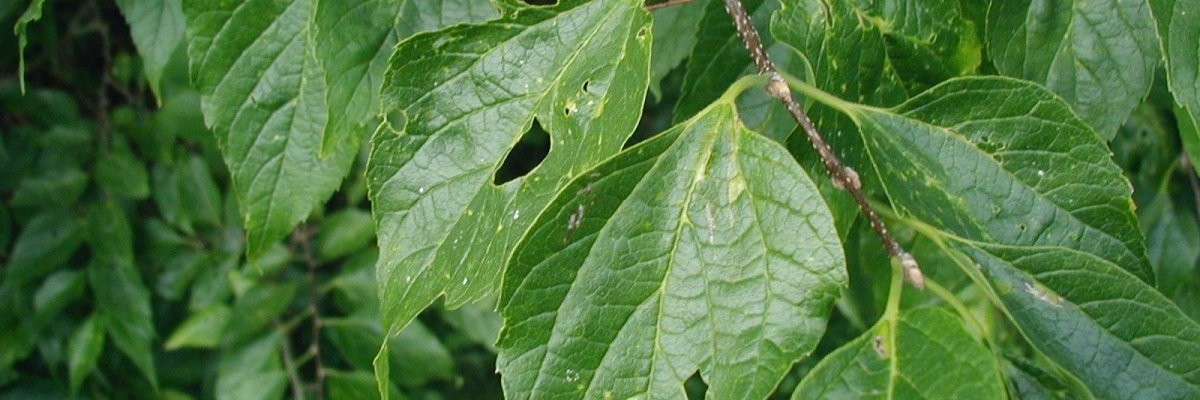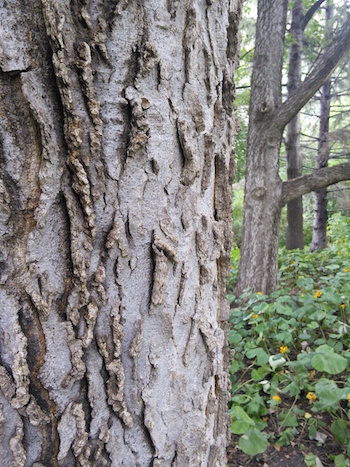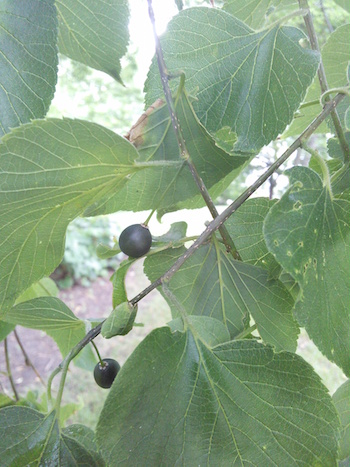
Description:
Hackberry is a very common, very large Minnesota shade tree. Leaves are alternately arranged on zig-zag like stems, and are simple. They have asymmetrically sized leaf bases, are sharply toothed, green, and grow to a sharp point. Hackberry has unremarkable, small, green, drooping flowers. Female flowers develop into green berry-like drupes that turn dark black in the fall. The bark is grayish and warty, with cork-like ridges.
Hackberries are common in urban areas because they grow quickly and establish well, and are relatively tolerant of urban conditions. Minneapolis and St. Paul replaced many dying elm trees with hackberry after the arrival of Dutch Elm Disease. The wood is most commonly used for firewood, but the leaves and drupes have various ethnobotanical uses.
Issues:
Hackberry nipple gall can cause disfigurations, along with several other cankers and galls, but the biggest issue is likely witches’ broom, caused by gall mites and powdery mildew.
Other Resources




